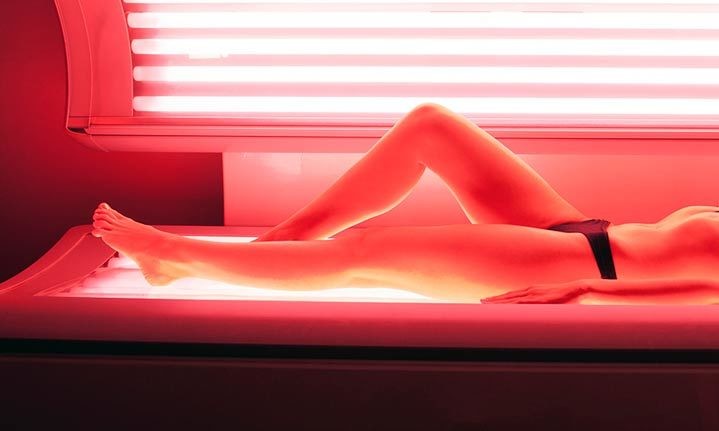Tanning beds and the sun both expose you to ultraviolet (UV) radiation, but are they equally harmful? This article debunks common tanning myths and explores the dangers of UV exposure from both sources, focusing on how tanning beds stack up against the sun in terms of skin cancer risk.
Tanning Bed vs. Sun: Separating Fact from Fiction
Many misconceptions surround tanning, often downplaying the serious health risks involved. Let’s address some prevalent myths:
Myth 1: Year-Round UV Exposure is Essential for Vitamin D
While it’s true that UVB rays from the sun trigger vitamin D production in the skin, minimal sun exposure is sufficient. Most people obtain enough vitamin D through brief, incidental sun exposure on their face and hands. For those who avoid the sun, fortified foods and supplements provide a safe alternative. Excessive UV exposure, whether from the sun or tanning beds, doesn’t increase vitamin D levels but significantly raises skin cancer risk. Tanning beds primarily emit UVA rays, which don’t contribute to vitamin D production.
Myth 2: Indoor Tanning is Safer than Suntanning
This is a dangerous misconception. While tanning beds mainly emit UVA light, which was once thought to primarily cause skin aging, we now know UVA penetrates deeper into the skin and is strongly linked to melanoma, a deadly form of skin cancer. One study found that 97% of women diagnosed with melanoma before age 30 had used tanning beds. Even one tanning bed session significantly increases your melanoma risk.

Myth 3: A Base Tan Protects Against Sun Damage
Any tan signifies DNA damage to skin cells, just like a sunburn. This damage begins immediately and accumulates with each exposure. A base tan offers minimal protection against further sun damage and doesn’t prevent skin cancer.
Myth 4: Tanning Beds are a Safe Alternative to Phototherapy
Tanning beds are vastly different from the specialized light boxes used in physician-supervised phototherapy for conditions like psoriasis. Medical phototherapy utilizes specific wavelengths of UV light under controlled doses and with protective measures to minimize risks. Tanning beds lack these safeguards and significantly increase skin cancer risk.
Myth 5: Tanning Beds Improve Mood or Treat Seasonal Affective Disorder
While some individuals experience a mood boost from tanning, this may be related to warmth, relaxation, or the perceived aesthetic benefits of tanned skin. However, these benefits don’t outweigh the substantial cancer risks. Safer alternatives for mood improvement and seasonal affective disorder include exercise, spending time outdoors with sun protection, using a “happy light,” and connecting with loved ones.
Conclusion: Tanning Beds – A Dangerous Choice
Both tanning beds and the sun pose risks, but tanning beds are particularly dangerous due to the concentrated dose of UVA radiation and the misconception that they are a safe alternative to sun exposure. There is no safe way to tan. Protecting your skin from UV radiation, whether from the sun or tanning beds, is crucial for preventing skin cancer.